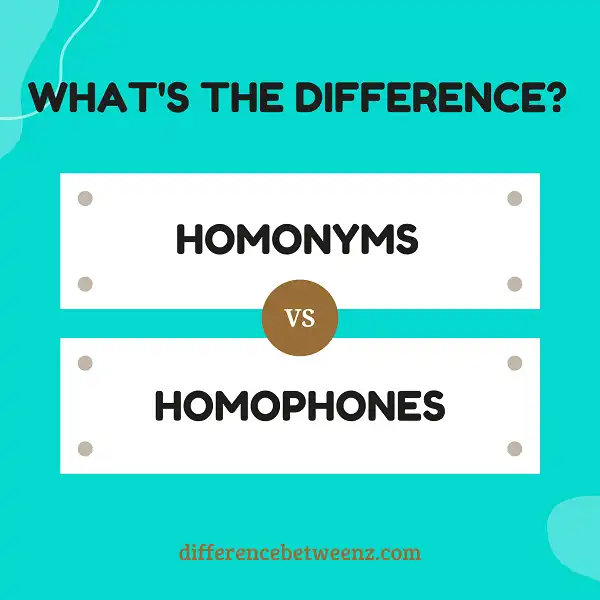Are you ever confused about the difference between homonyms and homophones? You’re not alone. These two terms are often used interchangeably, but they actually have different meanings. In this blog post, we will explore the difference between homonyms and homophones and provide some examples of each. We’ll also help you figure out which one to use in your writing!
What is Homonyms?
Homonyms are words that have the same spelling and pronunciation as other words but have different meanings. Homonyms are also known as heterographs. The word “homonym” comes from the Greek words “homo,” meaning “same,” and “onyma,” meaning “name.” There are three types of homonyms: homophones, homographs, and homonyms proper. Homophones are words that are pronounced in the same way as other words but have different meanings and spellings. Homographs are words that are spelled in the same way as other words but have different meanings and pronunciations. Homonyms proper are words that have the same spelling and pronunciation as other words but have different meanings. Homonyms can be confusing for people who are learning a new language. For example, the word “rose” can be a Homonym. It can be a flower or the past tense of “rise.” When you are learning a new language, it is important to pay attention to context clues to figure out which meaning of a Homonym is being used.
What is Homophones?
Homophones are words that are pronounced in the same way as other words but have different meanings, even though they may be spelled differently. For example, the words ‘flower’ and ‘flour’ are homophones. The word ‘homophone’ comes from the Greek for ‘same sound’. Homophones can cause confusion and be difficult to spell, especially if they are words that are often used together, such as ‘they’re’, ‘their’, and ‘there’. It is helpful to learn homophones in groups so that you can remember which word means what. Homophones are an important part of communication and language learning. By understanding homophones, we can help to avoid misunderstandings and improve our spelling.
Difference between Homonyms and Homophones
Homonyms and homophones are often confused because they are both words that have the same sound but have different meanings. Homonyms are words that have the same spelling and pronunciation but have different meanings. Homophones, on the other hand, are words that have the same sound but have different spellings and meanings. Homonyms are usually two words (ex: right/write), but there are some homonyms that are made up of more than two words (ex: principal/principle). Homophones, on the other hand, usually consist of just two words (ex: their/they’re). While homonyms can be difficult to understand, homophones are often even more confusing because they can change the meaning of a sentence. For example, the sentence “I’ve been there for hours” would mean something completely different if it were written as “I’ve been there for hours.” As you can see, it is important to be able to distinguish between homonyms and homophones in order to avoid confusion.
Conclusion
In order to avoid any confusion, it’s important to understand the difference between homonyms and homophones. Homonyms are words that sound alike but have different meanings, such as “bear” (the animal) and “bear” (to carry), while homophones are words that sound the same but have different spellings and meanings, like “read” (past tense of reading) and “reed” (a type of plant). With these definitions in mind, you should be able to use each word correctly in your writing. Thanks for reading!


